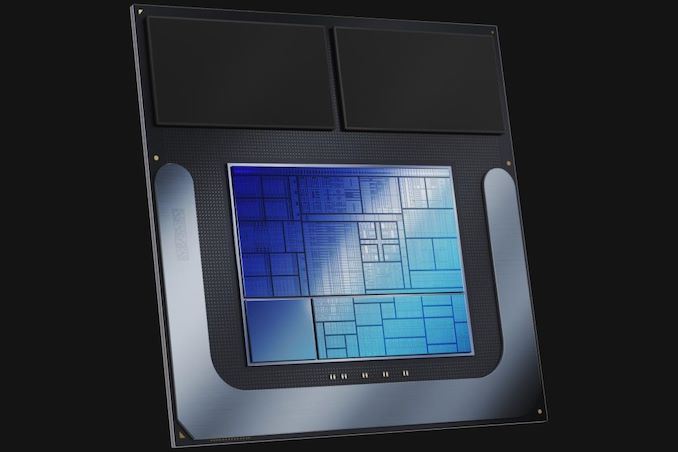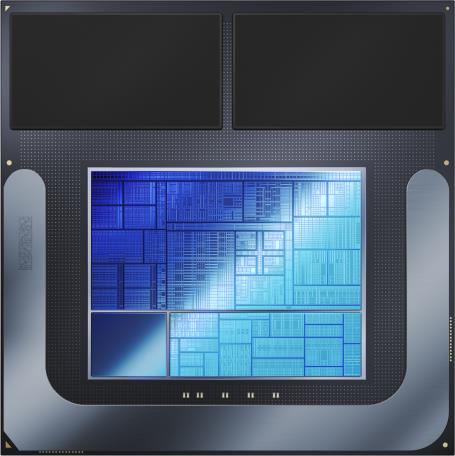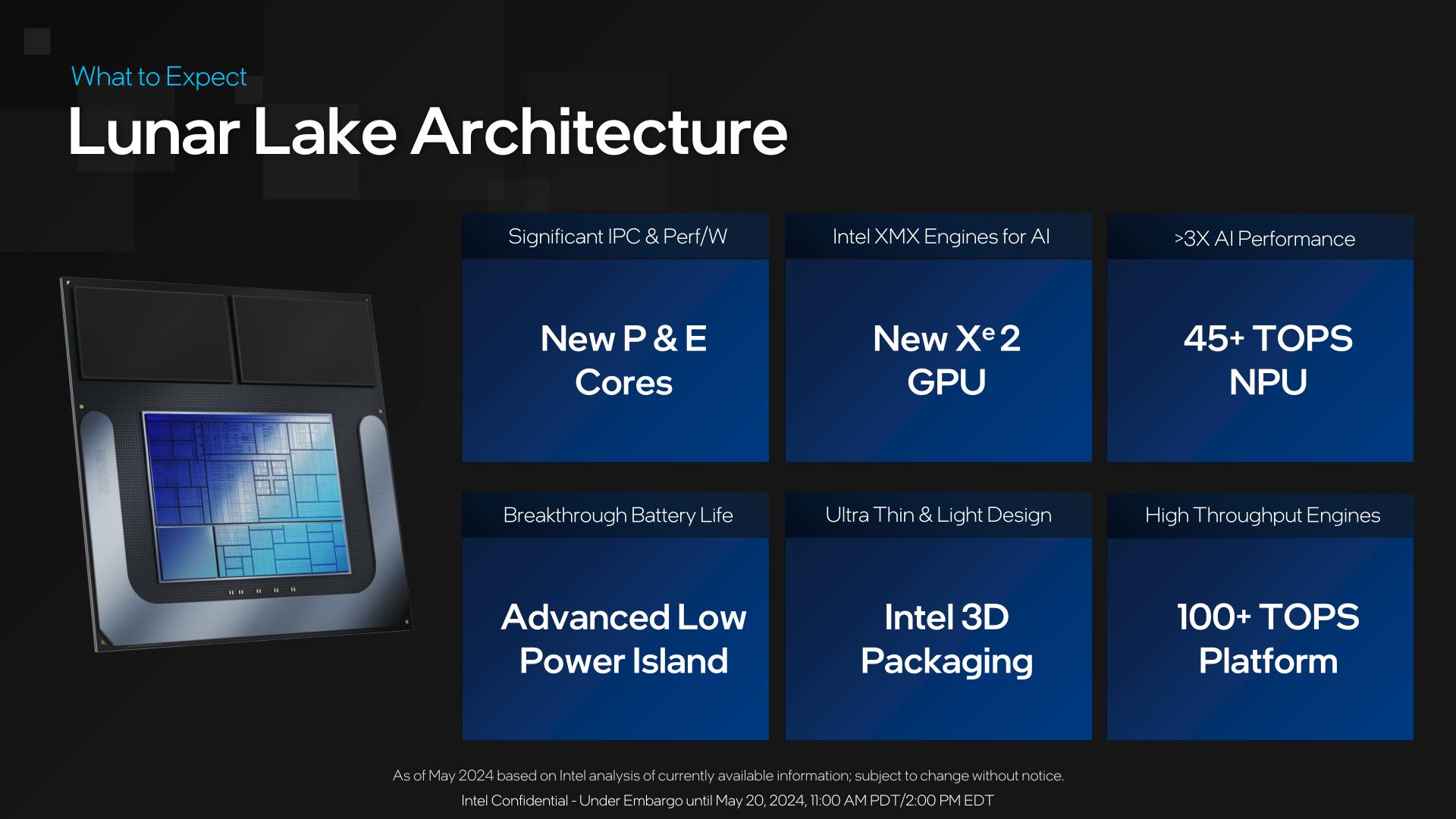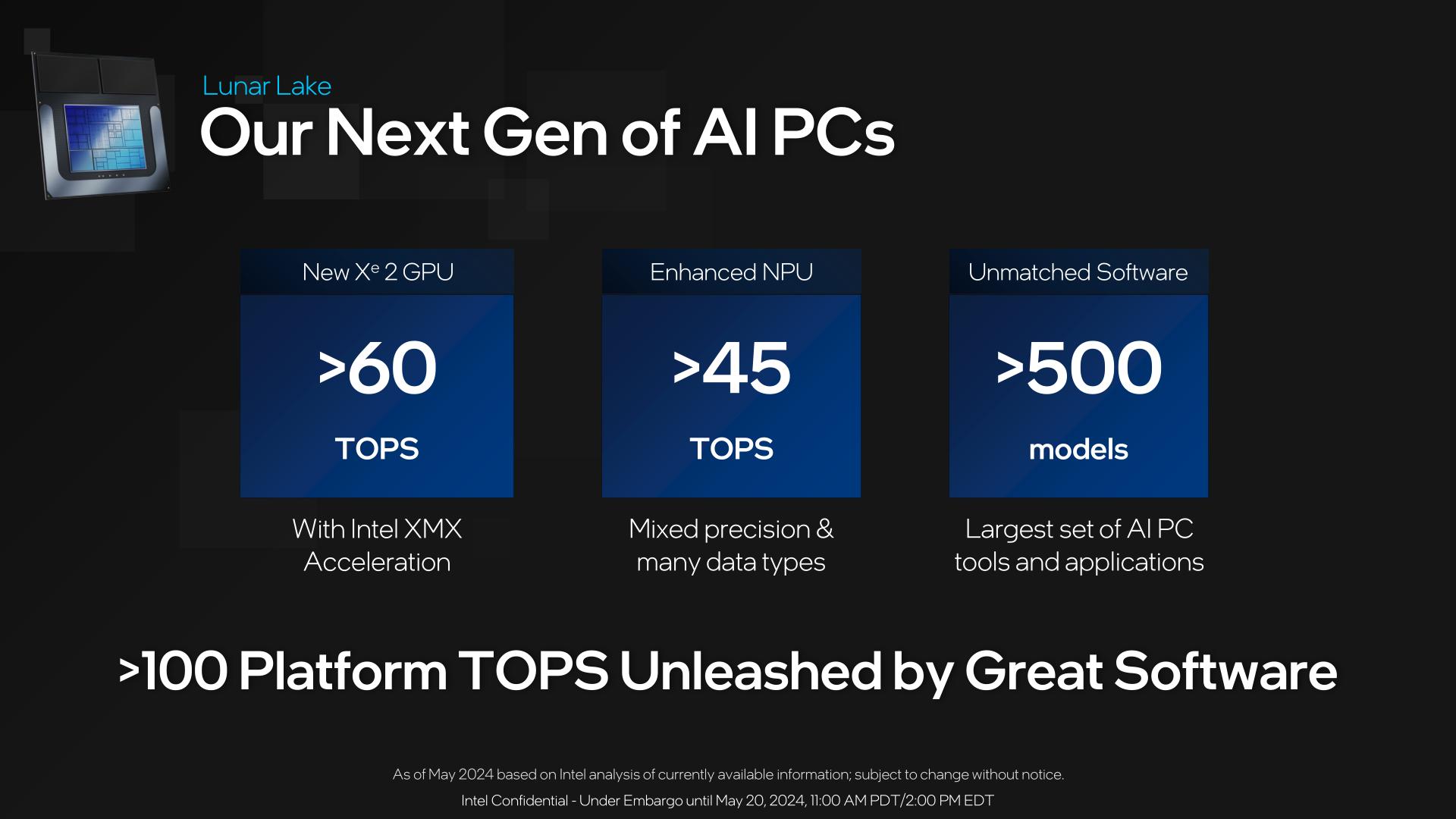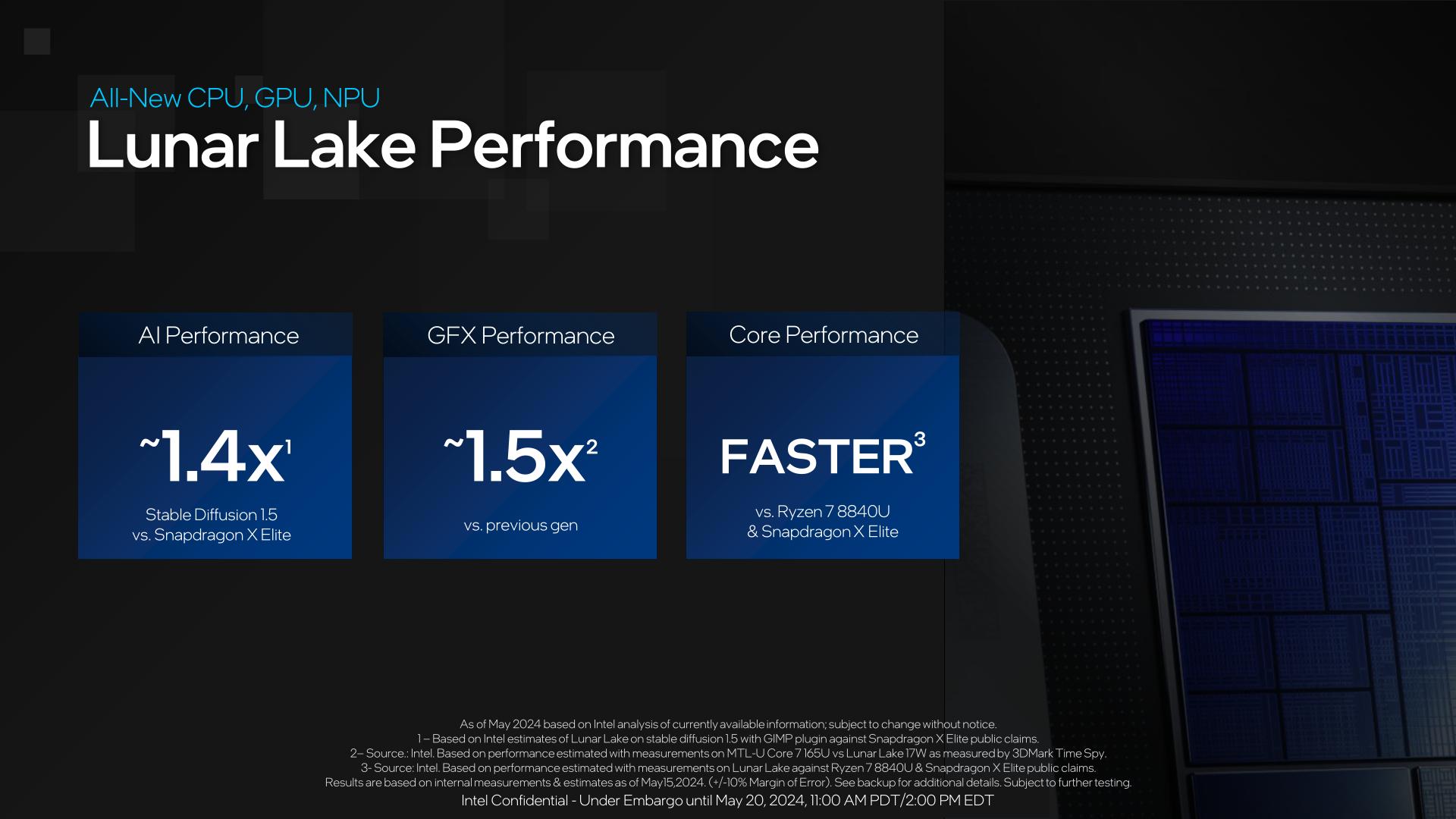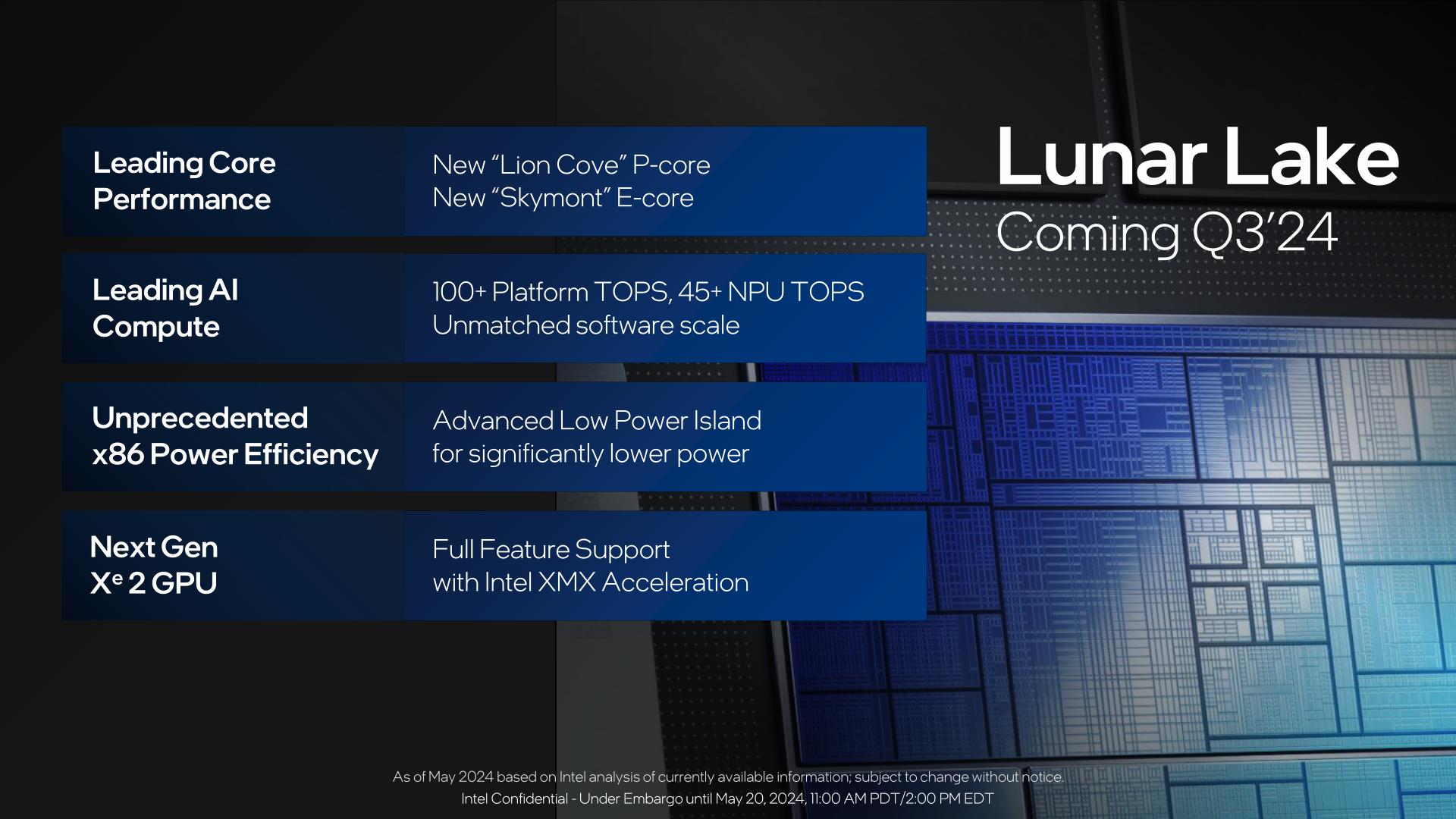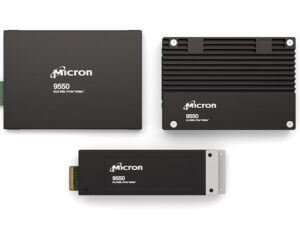In the PC industry, the coming weeks are set to be intense with numerous events like Microsoft Build and Computex Taiwan on the horizon, highlighting major conferences and trade-shows up until mid-June. Anticipation is high with all key PC CPU manufacturers ready to showcase, promising a flurry of new product announcements. Intel aims to take the lead by presenting an early sneak peek at its upcoming next-gen mobile processor, Lunar Lake, this afternoon, ahead of the aforementioned events.
Intel has been somewhat reserved about their Computex 2024 keynote expectations. However, it’s evident that their next-generation CPUs, namely Lunar Lake for mobile and Arrow Lake for both Mobile/Desktop, are expected to steal the spotlight. Both chips have been previously teased by Intel, with Lunar Lake getting more exposure, and additional details are being shared today even before Computex begins.
Today’s revelations serve as a precursor to Intel’s forthcoming Tech Tour event, occurring at the end of May. Coincidentally, this aligns with the embargo lift on Qualcomm Snapdragon X laptop announcements, which are expected in retail next month. Unlike these, Lunar Lake laptops are set for a Q4 release. This strategic timing by Intel seems to counteract the Snapdragon X launch, highlighting the competitive landscape of the laptop CPU market and Intel’s efforts to maintain its foothold amidst growing rivals.
Now, let’s delve deeper into Intel’s announcement.
Lunar Lake: A New Generation Prioritizing Power Efficiency & AI
Intel has consistently promoted its Lunar Lake as a highly efficient mobile processor ever since its initial demonstration last fall. It stands as the low-power successor to Meteor Lake, marking it as Intel’s second mainstream tiled CPU, with iterative improvements over its predecessor in both CPU and GPU architectures.
Despite Meteor Lake’s recent introduction, its lifecycle by Intel’s standards appears brief. As Intel Foundry accelerates with its 5 Nodes in 4 Years (5N4Y) manufacturing strategy, the urgency to release next-gen chips grows, especially with AMD and Qualcomm challenging Intel’s dominance in the mobile sector.
Intel reveals that Lunar Lake has successfully hit all production milestones and is already in the manufacturing phase, utilizing a B-stepping design. OEM shipments are expected in Q3 this year, projecting commercial availability in Q4. Meanwhile, Arrow Lake is poised for a Q4 launch, with more details to be shared at Computex.
| Intel CPU Architecture Generations | |||||
| Alder/Raptor Lake | Meteor Lake |
Lunar Lake |
Arrow Lake |
Panther Lake |
|
| P-Core Architecture | Golden Cove/ Raptor Cove |
Redwood Cove | Lion Cove | Lion Cove | Cougar Cove? |
| E-Core Architecture | Gracemont | Crestmont | Skymont | Crestmont? | Darkmont? |
| GPU Architecture | Xe-LP | Xe-LPG | Xe2 | Xe2? | ? |
| NPU Architecture | N/A | NPU 3720 | ? | ? | ? |
| Active Tiles | 1 (Monolithic) | 4 | 2 | 4? | ? |
| Manufacturing Processes | Intel 7 | Intel 4 + TSMC N6 + TSMC N5 | Intel + TSMC? | Intel 20A + More | Intel 18A |
| Segment | Mobile + Desktop | Mobile | LP Mobile | HP Mobile + Desktop | Mobile? |
| Release Date (OEM) | Q4’2021 | Q4’2023 | Q3’2024 | Q4’2024 | 2025 |
The manufacturing intricacies for Lunar and Arrow Lake remain undisclosed, as Intel aims to expedite its recovery by allowing its chip design groups to independently choose their manufacturing partners, often resulting in collaborations with TSMC, as seen with Meteor Lake.
Today’s preview highlights Lunar Lake sporting a streamlined 3-tile structure compared to Meteor Lake’s 4, focusing on SoC efficiency and compact design. Intel’s dedicated pursuit of energy efficiency benefits from a more consolidated architecture and on-package LPDDR5X memory solutions.
Significantly, Lunar Lake introduces new P-core and E-core designs, aiming for remarkable performance and energy efficiency enhancements. Notably, at least one configuration will feature a 4P + 4E layout, suggesting a balanced approach beyond the E-core-dominant designs of its predecessors.
The chip also incorporates a new Xe2 GPU architecture, aligning with Intel’s upcoming discrete GPUs and promising substantial improvements in both graphics performance and AI capabilities due to the inclusion of Xe Matrix eXtension (XMX) cores.
An enhanced NPU, though still shrouded in mystery, is set to substantially uplift Lunar Lake’s AI processing capabilities, marking a significant leap over its predecessor and positioning Intel in the AI technology race amidst competitors like Qualcomm and AMD.
Intel’s focus extends to unprecedented power efficiency and battery life, setting sights on surpassing previous benchmarks and taking on the industry-leading Apple M-series in terms of energy conservation and performance.
Performance Expectations
Intel briefly outlines performance metrics comparing Lunar Lake against its own previous generations and competitors, showing promising advancements, especially in AI applications and energy efficiency, though these early figures necessitate careful scrutiny.
Intel pits Lunar Lake against Qualcomm in AI performance, boasting a 40% improvement in specific benchmarks, and suggests superior GPU performance even at lowered power settings compared to its precedents.
In power efficiency, Intel demonstrates leadership through rigorous testing against competitors, underlining the enhancements made in Lunar Lake in terms of power consumption and battery longevity.
Lunar Lake: Anticipated Retail Launch in Q4
Concluding, Intel’s latest disclosures on Lunar Lake offer a glimpse into the upcoming innovations and enhancements, setting the stage for a detailed showcase at Computex and the imminent Tech Tour event. As the industry eagerly awaits further details, Intel is preparing to deliver Lunar Lake processors to OEMs in Q3, aiming for a significant market impact during the forthcoming holiday season.

